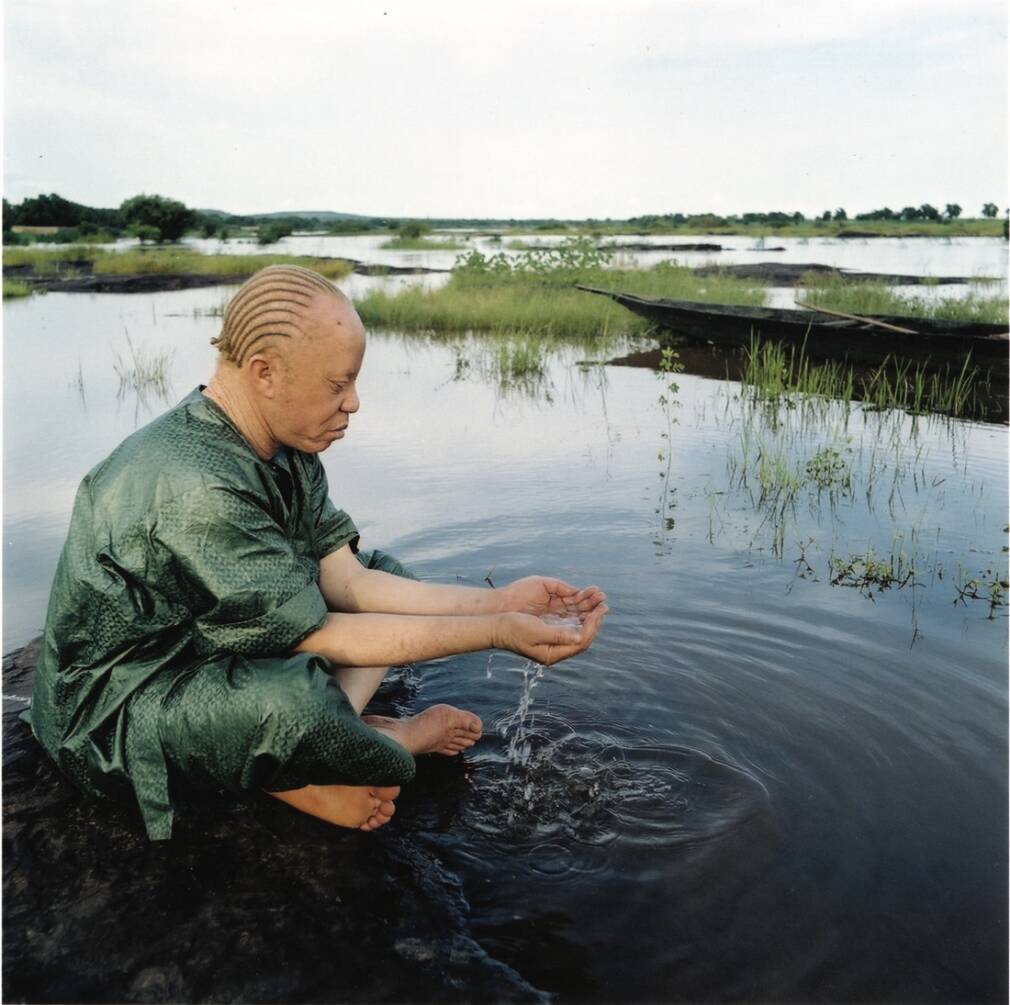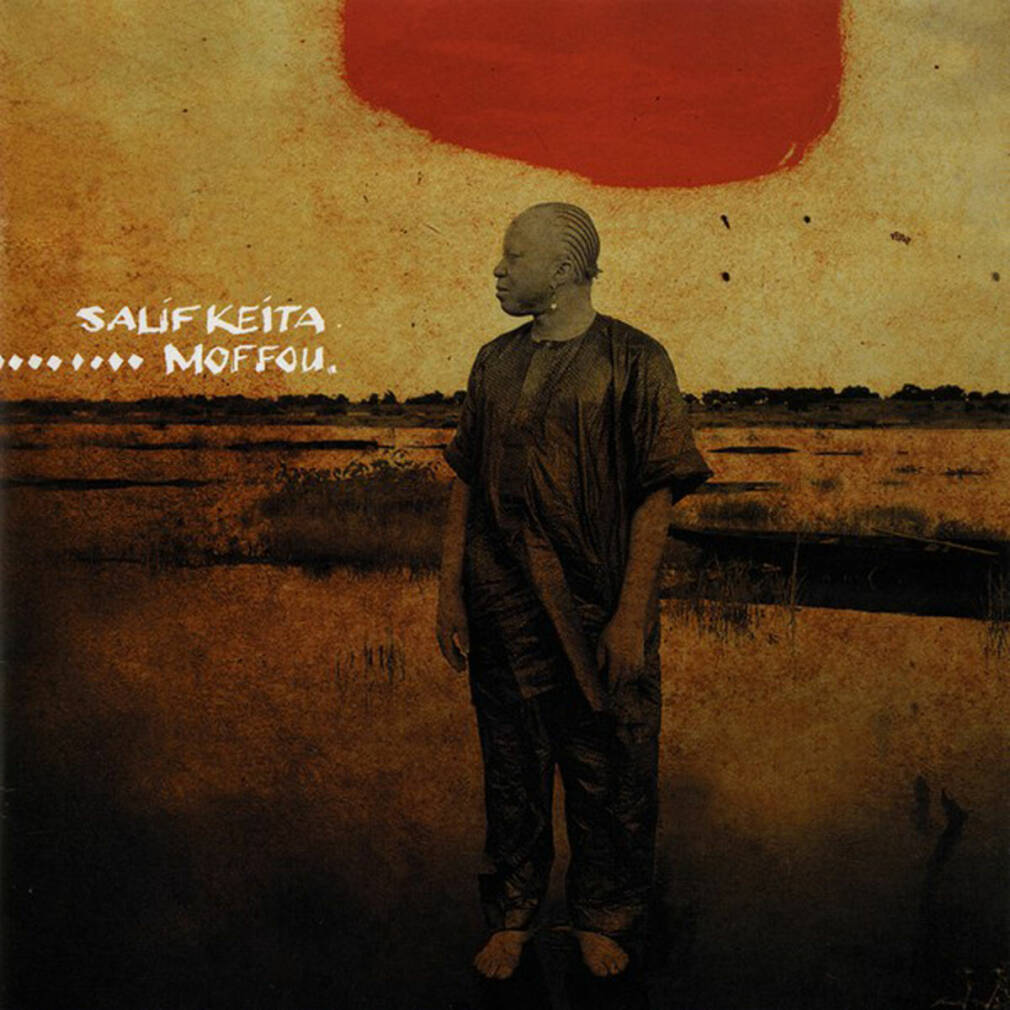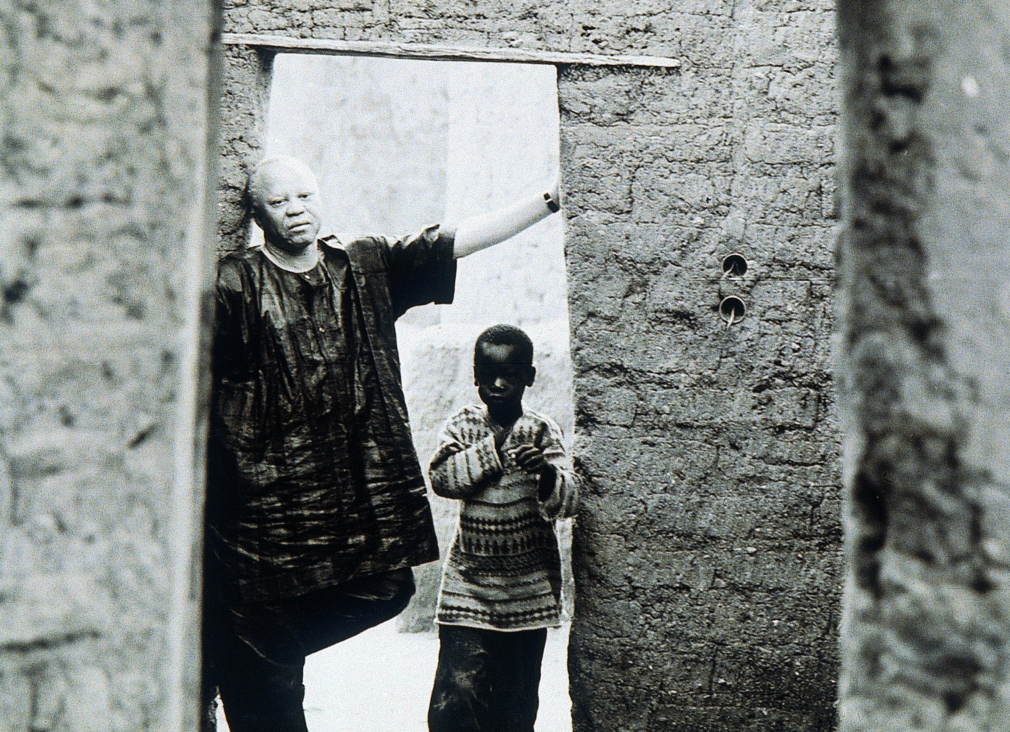Twenty years already, and not a wrinkle. Moffou has quickly become a classic in Salif Keïta’s large discography, a jewel that owes much to its production quality. It all started by chance, “an incredible story”, according to Jean Lamoot, the man who was at the helm. “After having finished (the album) ”Des Visages des Figures” of Noir Désir, I had come to attend their first concert, at the Nuits de Fourvières in Lyon. I was talking with them and Jacques Sanjuan, editor at Universal, when he received a phone call from Daniel Richard, who was having production problems. Jacques then offered me the gig, thinking that I was the right person as I had just told him that I had grown up from 5 to 17 years old in Ivory Coast, Burkina Faso, Burundi, Rwanda… I have always been impregnated with African music. These are my roots, something natural.” Three days later, the ingenious sound engineer, known in particular for his superb collaborations with Bashung, would be hired to realize Salif Keïta’s opus.
A modern return to tradition
“Initially, this album was to be produced by Christian Pégand, who was going to handle the tour and wanted to produce a record,” recalls Daniel Richard, then head of Universal Jazz France. Alas, the pairing turned sour. “So we decided to produce it live, entrusting it to Jean Lamoot, who had a real impact on the music, magnifying the ideas and sublimating the sound with amazing mixing work. The whole recording was done in a serene way, Salif being very shy with those he doesn’t know. It was a moment of grace: he was receptive to our proposals, something we wouldn’t see afterwards as Salif began imposing his views more and more.“
There were several actors who played a role in the album’s future success. Freddy Zerbib, Salif Keïta’s road manager, Patrick Votan, Daniel Richard’s “lieutenant” at Universal, Kanté Manfila, Salif Keïta’s “godfather”, and then the percussionist Mino Cinelu, whose participation and proposals were to prove essential. “Each of the participants brought something to the table, and in a harmony that I have rarely experienced. I believe that the record is the result. It was a wonderful experience,” says Daniel Richard. “Mino Cinelu was the key to the record. I had recovered the traditional bases: the bass, the n’goni and the voice. It was good, but a bit stuffy, not airy enough. We did three days of percussion, and once he was on the tracks, he clarified everything, opened it up. From the first takes, starting with “Madan”, his inspiration was decisive for the rest“, insists Jean Lamoot.
After the first sessions at the Studio de la Seine (with guitar, double bass, percussion…), Jean Lamoot took the tapes to his friend Arnaud Devos, where he added “lots of small instruments, a lot of incongruous stuff, synthesizers, harmonicas“, and then the voice of Cesaria Evora. Salif’s voice was added during the mix, three weeks after at the Studio du Manoir, in the Landes. “It took time, like all great records,” says Lamoot, who has raised Moffou to the top of his personal collection. “It’s a return by Salif to the tradition, to the acoustic, and I just modernized it, without deflowering it, with the arrangements, with the sound, with my interventions by cutting some tracks, by adding a little distortion.“
Salif Keïta comes front and center
After having been lost a part of his public in Mali in the synthetic meanderings of “world music”, Moffou succeeded in satisfying both his fans at home and the neophytes who discovered his outstanding voice. Salif became legend at the turn of the 1970s, during the swinging aftermath of decolonization, by integrating the two orchestras that dominated the Afro-jazz-funk scene spiced with salsa, the Rail Band and the Ambassadeurs, before publishing an initiatory Mandjou recorded in Ivory Coast at the end of the same decade, then a sublime Soro in 1987. No doubt, fifteen years later, Moffou put Salif Keïta back in the spotlight.
At the time, the sprite 50-year-old had just laid the first stones of the Moffou club-hotel, which opened its doors in 2002, just as Mali was hosting the AFCON (African Cup of Nations) in style. “It’s more than just a concert venue. It will also teach music, with courses, and within a year there should be a recording studio. I want my compatriots to benefit from my experience acquired over the last twenty years abroad, to give the youngest the opportunity to reappropriate their traditions, to do something useful,” confided Salif Keïta at the time, quietly seated along the Niger, two steps away from Djoliba, his native village which bears the Mandingo name of the river.

“Moffou”, a small, rural flute whose high-pitched sound is used to make the birds fly away from the fields, is the title of this album. “I chose this image because I want us to rediscover the path of our tradition, without necessarily being backward-looking. By reinterpreting it with our sauce, with our current events“, summarized Salif, nicknamed the Caruso of Mali. Hence the “roots sound, but very sophisticated“, hence the love songs, like the duet with Cape Verdean Cesária Évora that opens the album, appears obvious, and has all the marking of a 2002 summer hit.
Moffou, a return to oneself and a simultaneous leap forward, towards others, would become “a huge success, one of our best artistic and commercial successes“, according to Daniel Richard (350,000 albums sold to date, including 140,000 in France). The album initially benefited from the remix of “Madan” by Martin Solveig, “But in the end, it was the original version that took over the listening and sales,” says Jean Lamoot. “This record is timeless: when I listen to it, it is always the same infinite happiness. It continues to shine and to bring me requests. It was my gateway to reconnect with West Africa.” Since then, this sound wizard has worked with Kassé Mady Diabaté, Bako Dagnon… and now the prodigious guitarist Guimba Kouyaté, son of the venerable Mah Damba. Without achieving the same magic, and not without regretting not having been able to record those “magical moments,” as Daniel Richard describes them, “when Salif took his guitar, very late in the studio during Moffou“. Lamoot agrees, which leaves a certain suspense. “When he concentrates in the bass, it is beauty, power! I’ve always tried to slant him in this direction, a minimalist album where he sings lullabies, but he has repeatedly refused, afraid of disappointing his audience’s expectations.“



